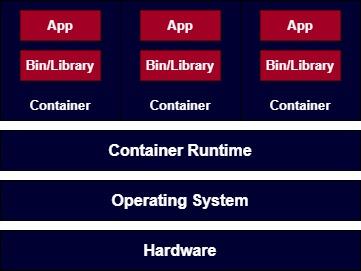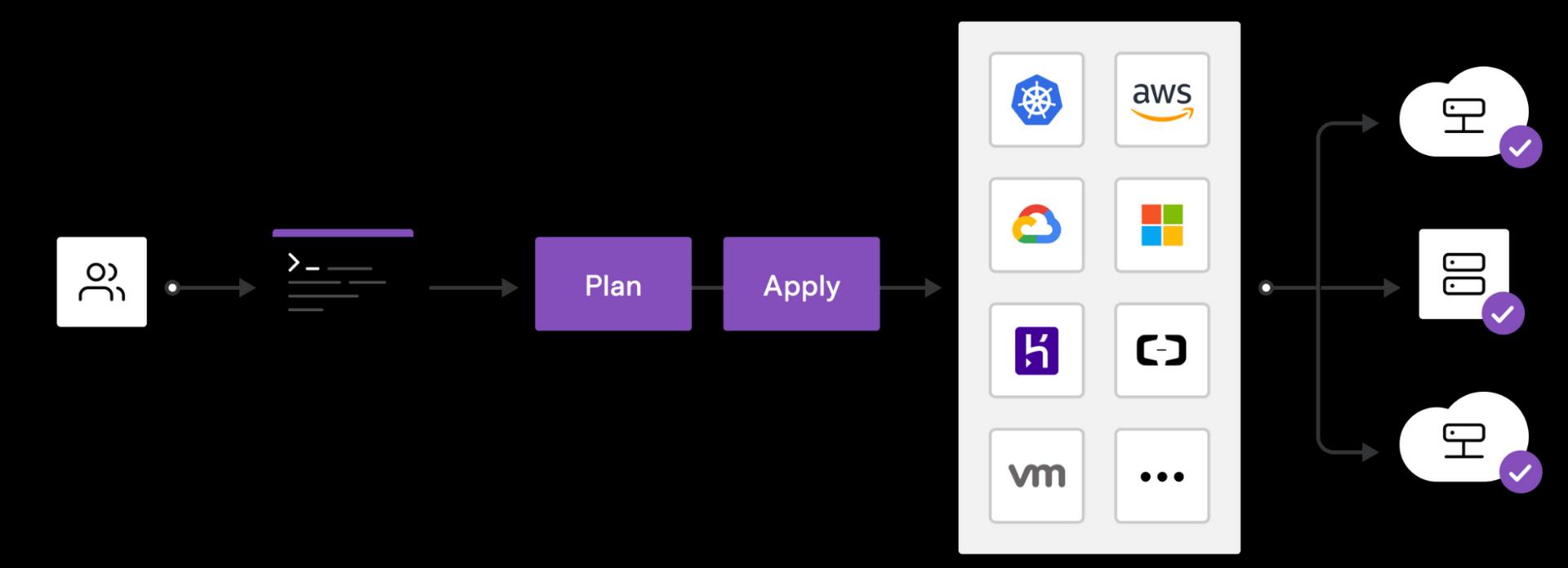- Home
- Blog
- Kubernetes
- Kubernetes Vs Terraform

- Kubernetes Architecture
- Kubernetes Deployment Vs Kubernetes Services
- Kubernetes Ingress
- Kubernetes Interview Questions
- Kubernetes Load Balancer Services
- Kubernetes Tutorial
- Kubernetes Vs Docker swarm
- Kubernetes Vs Openshift
- Kubernetes Overview
- Detailed Study On Kubernetes Dashboard
- What is Kubernetes?
- Cloud Deployment Models
- Fluentd Kubernetes
- Kubernetes Tools
- Kubernetes Projects and Use Cases
- How To Install Kubernetes on Ubuntu?
- Installing Kubeadm
- Kubernetes Secrets
- Kubernetes Storage Class
- Kubernetes Deployment YAML
- Install Kubernetes on Windows
- Kubernetes VS Openstack
- Kubectl Connect to Cluster
- ECS Vs Kubernetes
- Kubernetes Pod Vs Node
Kubernetes and Terraform are the two well-known IT infrastructure management tools. Though both tools are the same in terms of their purpose, they differ in their features and functions in many ways.
If you want to choose the right tool out of the two for your business or project requirements, then it is extremely important to understand the key differences between the tools. This blog compares Kubernetes and Terraform from the surface to the root level. It will help you to choose the right one with utmost confidence.
Let’s buckle up to explore!
Table of Contents:
- What is Kubernetes?
- What is Terraform?
- Kubernetes Vs. Terraform – How do they differ?
- Kubernetes Vs. Terraform
- Pros and cons of Kubernetes
- Pros and cons of Terraform
- When to use Kubernetes?
- When to use terraform?
- FAQs
What is Kubernetes?
Kubernetes is a robust open-source contain management tool. It is an automation tool with which you can deploy, manage, and scale containers in Kubernetes clusters. Kubernetes orchestrates container resources in tune with the varying workloads.

Kubernetes simplifies managing containerized cloud-native and microservices-based applications. With Kubernetes, you can easily manage the applications spread across multiple containers. Besides, you can monitor the health of the containers tightly.
| Gain mastery over Kubernetes, the cornerstone of modern IT environments, through our expert-led Kubernetes Training. Let us guide you through its intricacies and empower your journey towards proficiency! |
What is Terraform?
Terraform is essentially an Infrastructure as Code (IaC) automation tool. You can leverage Terraform to create, manage, and destroy the cloud and on-premises IT infrastructure. Terraform uses human-readable configuration files to manage the infrastructure.

The greatest advantage of Terraform is that it can represent an entire IT infrastructure as code. It allows you to modify configuration files and reuse and share the files. With Terraform, you can manage infrastructure components at all levels seamlessly. Above all, you can use a single workflow to manage resources in multiple environments.
| Gain mastery over Terraform, the cornerstone of modern IT environments, through our expert-led Terraform Training. Let us guide you through its intricacies and empower your journey towards proficiency! |
Kubernetes Vs. Terraform – How do they differ?
If you look at the Kubernetes and Terraform on the surface level, both tools may look alike. But many differences split them apart from each other.
Let’s deeply analyze the tools against various aspects with a magnifying lens. It will help you to get the big picture of the tools and pick the right one for your needs.
Area of Focus
Kubernetes focuses on deploying and managing containers on Kubernetes clusters for fluctuating workloads. Simply put, it orchestrates container resources. The resources are mainly servers and storage.
On the other hand, Terraform focuses on configuring, provisioning, and managing IT infrastructure resources. The resources can be networks, virtual machines, and storage devices. Terraform uses configuration files to manage the infrastructure.
Configuration Language
Terraform uses Hashicorp Configuration Language (HCL) to create configuration files. In its basic form, HCL is a domain-specific language.
On the other hand, Kubernetes uses the YAML or JSON format manifest files to configure Kubernetes container resources.
Command line interface
Kubernetes uses the command line tool – Kubectl. You can use this tool to manage containers in Kubernetes clusters.
On the other side, Terraform uses the command line tool – Terraform CLI. You can use this tool to manage resources in an IT infrastructure.
Ease of Use:
Terraform is a go-to tool for beginners. You can quickly set up and install Terraform. Learning and working with HCL is simple. So, anyone can build Terraform workflows on the fly. Mainly, you can use a single workflow to manage resources in multiple environments.
Unlike Terraform, you must have strong expertise to build workflows in Kubernetes. Particularly, you must be proficient in Kubernetes cluster internal components. In Kubernetes, configuring different cluster nodes and installing container components are complex and time-consuming.
Learning Curve
Kubernetes has a steep learning curve. This is because understanding how to deploy Kubernetes clusters takes a long time. You must be familiar with containerization principles, load balancing, and scaling best practices to manage Kubernetes clusters smoothly.
On the contrary, the learning curve for Terraform is flat. Learning the HCL language and configuring files is not a big deal. Even beginners can manage IT resources in various environments effortlessly.
Abstraction Level
Kubernetes provides a lower level of abstraction. In other words, it manages the resources in containers at the surface level.
On the other side, Terraform provides a higher level of abstraction. To put it another way, Terraform configures and manages the resources of an IT infrastructure and its dependencies at the root level. You can even easily define complex relationships between resources with Terraform.
Failure Recovery
Kubernetes provides an exceptional recovery mechanism for resources in Kubernetes containers. If any container fails, Kubernetes finds it automatically and restarts it instantly. Still, if the container doesn't respond, assign a new container to redirect the workload of the failed container.
On the contrary, Terraform doesn’t support automatic failure recovery. If there is any failure in the infrastructure, you need to write scripts and run them separately to restore the infrastructure.
Scalability
Kubernetes supports managing containerized applications at scale with crucial features, such as load balancing, automatic scaling, and service recovery.
On the flip side, Terraform only performs horizontal scaling of applications. However, the scaling performance in Terraform is slightly less than in Kubernetes.
Kubernetes Vs. Terraform
Let’s summarize the differences between Kubernetes and Terraform in the below table.
|
Features |
Kubernetes |
Terraform |
|
Focus area |
Container orchestration |
Configuring, provisioning, and managing IT infrastructure |
|
Configuration language |
YAML and JSON |
HCL – Harshicorp Configuration Language |
|
CLI |
Kubectl |
Terraform CLI |
|
Learning curve |
Steep learning curve |
Flat learning curve |
|
Ease of use |
It's a bit challenging for newbies. Need expertise to use the tool. |
Even beginners can work effortlessly. |
|
Resource management |
Manages containers in Kubernetes clusters. |
Manage compute instances, storage devices, and networks. |
|
Abstraction level |
Low-level abstraction |
High-level abstraction |
|
Failure recovery |
Automatic failure recovery |
Need tools and scripts to recover failed resources. |
Pros and cons of Kubernetes
Let's look at the pros and cons of Kubernetes in the following.
Pros:
- Supports both horizontal and vertical scaling
- Increases the availability of applications
- Optimizes the use of resources by managing containers efficiently
- Supports smooth application deployment on the cloud or on-premises
- Provides excellent self-healing features
- Offers improved extensibility, simplifying integration with external services
Cons:
- Setting up and managing containers is a bit complex
- The learning curve for Kubernetes is steep
- Memory and CPU overhead affect the performance of applications at times
- Much dependence on external services reduces the reliability of the tool
Pros and cons of Terraform
Let’s take a look at the pros and cons of Terraform.
Pros:
- Employs Terraform modules that you can reuse and share across multiple deployments
- Offers excellent portability, managing resources in different platforms and services
- Integrates with version control systems like Git
- Provides excellent documentation so anyone can learn and work with Terraform seamlessly
- Creates declarative configuration files that define the final state of the infrastructure
Cons:
- Partner plugins create dependency on third-party companies
- Handling state files is hectic. Any mismatch between the state file and configuration creates issues.
When to use Kubernetes?
Kubernetes is a great choice if you need to:
- deploy and manage large-scale containerized applications.
- automate deploying and managing applications across multiple numbers of servers.
- manage Microservices-based applications.
- run highly available applications on Kubernetes clusters
- move applications from local machines to production deployments at scale
When to use Terraform?
Terraform is a great choice if you need to:
- provision and manage IT infrastructure automatically.
- manage complex infrastructure dependencies.
- manage frequently changing multi-layered applications
- reuse, and share configuration files to eliminate the repetitive tasks of DevOps engineers across your organization
- create disposable environments so you can create, use, and discard once the goal of the environment is reached.
FAQs:
Is learning Terraform easy?
Of course! Learning terraform is easy. If you are willing to invest your time and efforts, then learning Terraform is a piece of cake. In MindMajix, our expert trainers simplistically deliver Terraform training, making learning fun and fruitful.
Is Kubernetes in demand?
Companies of all sizes are increasingly employing Kubernetes. So, learning Kubernetes is a wise idea. By learning Kubernetes, you can open doors to DevOps engineers, Kubernetes administrators, cloud architects, and many more. According to the Ambition box, Kubernetes admins can earn up to 11 LPA on average in India. They can make up to 146k USD annually on average in the USA.
What is the critical difference between Kubernetes and Terraform?
Terraform offers a higher level of abstraction, configuring resources in the environment at the root level. On the flip side, Kubernetes provides a low level of abstraction in deploying and managing containers in clusters.
Can terraform manage kubernetes?
Yes, Terraform can manage Kubernetes. Terraform with Kubernetes can orchestrate containers and scale them with varying workloads.
Can you use Terraform and Kubernetes together?
Yes, we can use Terraform and Kubernetes together. We can use the Terraform Kubernetes provider to manage containers in Kubernetes clusters. When Kubernetes and Terraform are combined, they provide more powerful results to users.
Conclusion: Kubernetes or Terraform – Which one is the right choice?
Which one should you choose – Kubernetes or Terraform? Ideally, it depends on your project's or business requirements. Kubernetes shines in container management and orchestration. At the same time, Terraform excels in IT resources provisioning and management.
If you want to explore and get more clarity on Kubernetes and Terraform, no worries – MindMajix will help you. MindMajix is the leading eLearning provider where you can enroll in the courses and learn to get more insights. It will help you to make a strong decision when choosing the right tool.
 On-Job Support Service
On-Job Support Service
Online Work Support for your on-job roles.

Our work-support plans provide precise options as per your project tasks. Whether you are a newbie or an experienced professional seeking assistance in completing project tasks, we are here with the following plans to meet your custom needs:
- Pay Per Hour
- Pay Per Week
- Monthly
| Name | Dates | |
|---|---|---|
| Kubernetes Training | Dec 30 to Jan 14 | View Details |
| Kubernetes Training | Jan 03 to Jan 18 | View Details |
| Kubernetes Training | Jan 06 to Jan 21 | View Details |
| Kubernetes Training | Jan 10 to Jan 25 | View Details |

Madhuri is a Senior Content Creator at MindMajix. She has written about a range of different topics on various technologies, which include, Splunk, Tensorflow, Selenium, and CEH. She spends most of her time researching on technology, and startups. Connect with her via LinkedIn and Twitter .





